Meet the Hewitts: Part 9 covered the life of the Hewitt Sisters in their mature years — their travels and “eccentricities.” We conclude these blog snippets with a look at why Sarah and Eleanor called their Museum “modern” and a brief history of the Museum’s move from Cooper Union to its present home in the Carnegie Mansion.
Margery Masinter, Trustee, Cooper Hewitt, Smithsonian Design Museum
Sue Shutte, Historian at Ringwood Manor
A Modern Museum
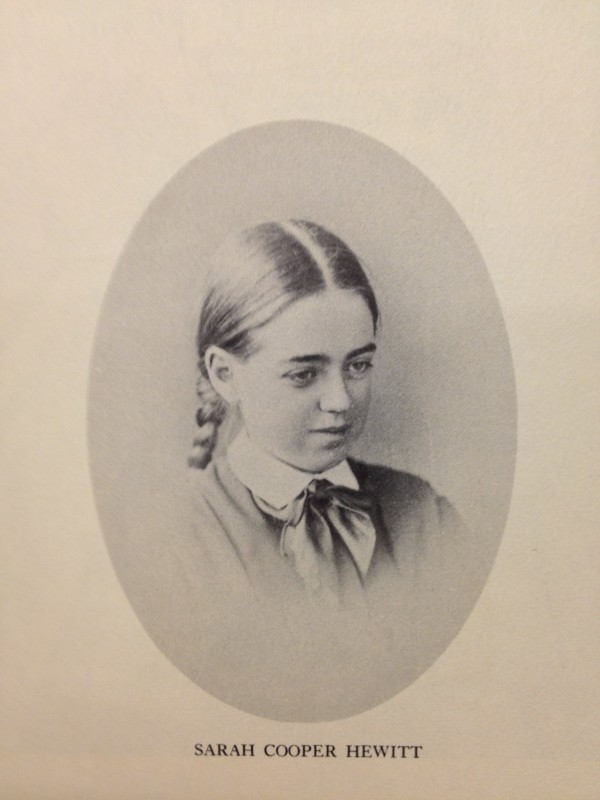
Drawing of young Sarah. Chronicles of Cooper Union, Vol. 1. Cooper Hewitt, Smithsonian Design Museum Library.

Photograph of young Eleanor. Courtesy of New York Historical Society, gift of Norvin H. Green.
Previous snippets told how Sarah and Eleanor were groomed from childhood by their extraordinary grandfather and parents to be collectors, philanthropists, and educators. They were well-educated, accomplished musicians, artists, linguists, athletes, passionate shoppers, and, as independent women still in their 30‘s, they founded in 1897 a museum of decorative arts dedicated to the future of good American design.
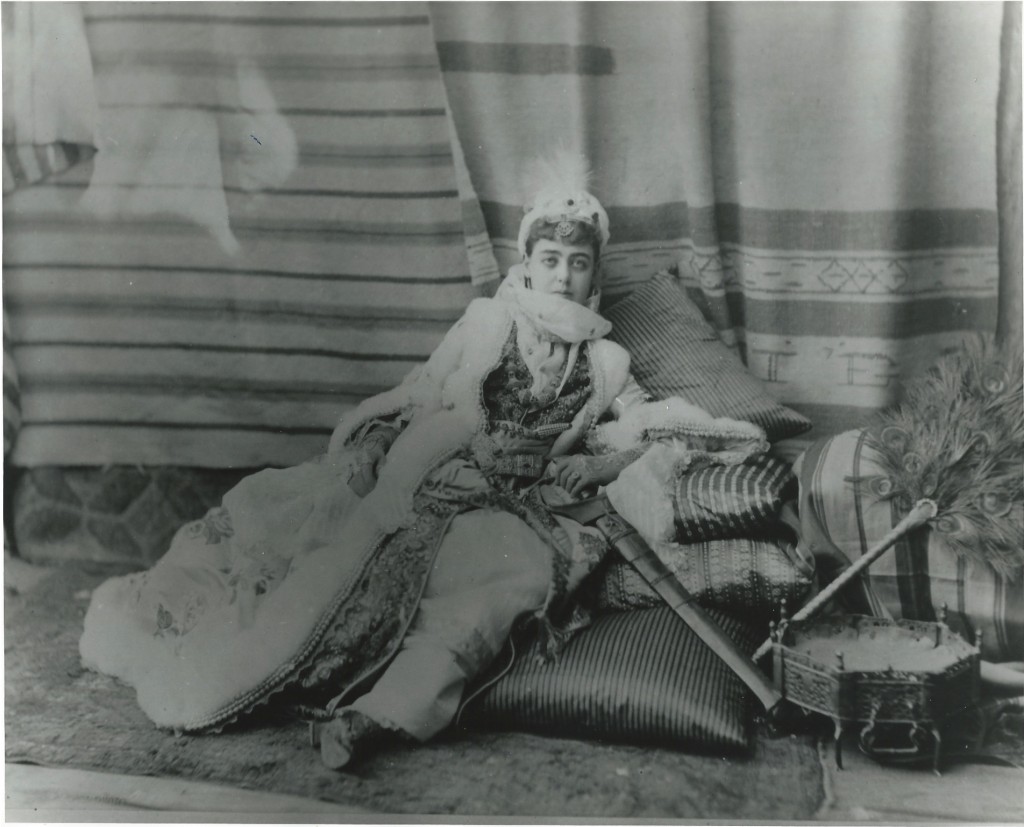
Photograph of Sarah costumed for the Vanderbilt Ball, 1883. Cooper Hewitt, Smithsonian Design Museum.

Eleanor. Portrait by Antonia de Banuelos. Cooper-Hewitt, National Design Museum
In 1919, Eleanor wrote a document for the Wednesday Afternoon Club, titled “The Making of Modern Museum.” In an era of progressive art and design movements, what did she mean by “modern” when the Cooper Union Museum for the Decorative Arts collected and encouraged study of objects primarily made before 1825?
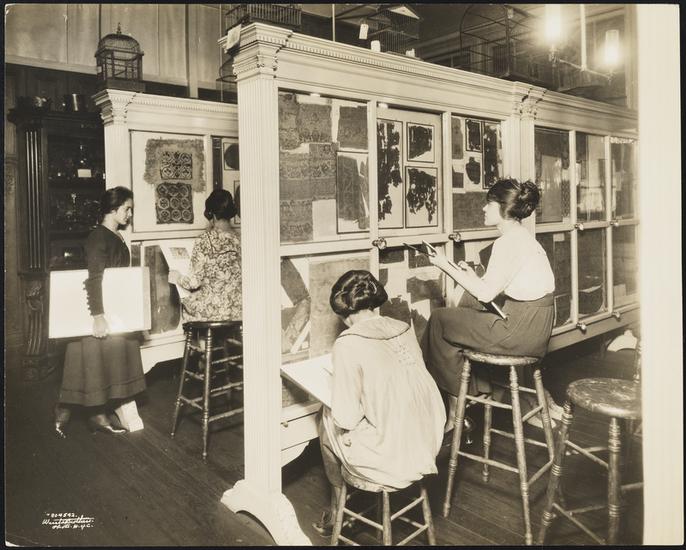
Students looking at textiles, ca. 1925. Textiles, which could not be handled, necessitated the invention of display cases with interior sliding panels. Cooper Hewitt,Smithsonian Design Museum.
The Museum represented modernism of use. It was modern in being freely accessible to all and open in the evenings so that working artisans could use it. It was modern in placing few restrictions on the use of objects. Objects were to be used — measured, handled, photographed, sketched. Eleanor emphasized that objects were to be arranged chronologically and massed together to create “a happy, busy atmosphere” to encourage comparison and discussion and “original ideas in unexpected directions.” The extensive Library and Encyclopedic Picture Scrapbooks filled with decorative arts photos and clippings from magazines and newspapers were readily available to broaden the museum visitor’s education and visual vocabulary. Eleanor called the museum an “Industrial Art Laboratory” with artistic equipment of styles and periods similar to science schools. It was “a working museum with collections of beautiful specimens of art applied to industry.”
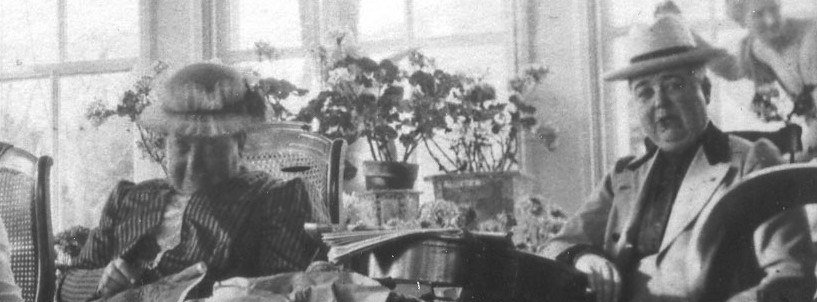
Photograph of Sarah, right, and Eleanor, 1918. Courtesy of Ringwood Manor.
This photograph is the last one known of the sisters together. Very few images of the sisters still exist.
In October 1930, the day after Sarah died, The New York Times published an editorial titled “A Lady of the Old School.” Sarah “ .. . represented the best that New York of a generation ago had in its life. She belonged to the “400,” but she was not under the restraint of its social precedents. She and her sister made their own.”
After 1930, an Advisory Council composed of Sarah and Eleanor’s dedicated friends, Mrs. Montgomery Hare, Sue Bliss and Edith Wetmore, continued to guide the Museum at Cooper Union with the “curator,” Mary S. M. Gibson. In 1933, Calvin S. Hathaway, a Princeton graduate who had been professionally trained at the Philadelphia Museum of Art, was hired to be assistant curator. An experienced curator and administrator, he professionalized the museum, introducing publications and organizing exhibitions.
In 1963, the trustees of the Cooper Union concluded that the Museum had become too much of a financial drain and could no longer be maintained. In July 1963 the Museum at Cooper Union was closed to the public. In October 1967 an agreement was reached whereby the collections and library of the Cooper Union Museum would be transferred to the Smithsonian Institution with the provision that they be retained intact in New York City. In 1968, Secretary of the Smithsonian Dillon Ripley II announced that the the historic Andrew Carnegie Mansion would house the newly named Cooper-Hewitt Museum, the Smithsonian Institution’s National Museum of Design. After extensive renovation, the Cooper-Hewitt Museum opened to the public in its new location in 1976.
Today the Cooper Hewitt, Smithsonian Design Museum is scheduled to re-open on December 12, 2014 after a three-year renovation and restoration of the Carnegie Mansion. A 21st Century museum has been created to give 60 percent more gallery space to its important collections and temporary exhibitions.
Acknowledgements
We gratefully acknowledge the archivists, librarians, historians, curators and others who have shared our enthusiasm for the Hewitt Sisters and their world. They opened their archives and resources to us and never failed to respond to our many queries and visits. We were especially happy to discover a trove of ephemera, including letters, personal documents, diaries, invitations, artwork, plays, poems and more, which enabled us to use the voices of Sarah and Eleanor in our Blog.
Cooper Hewitt, Smithsonian Design Museum Library, 2 East 91st Street, New York City. Stephen Van Dyk, Director. Cooper Union Museum historical files and photographs; rare Hewitt family books; Eleanor’s travel diaries; facsimile copy of Ringwood Manor Guest Books.
Cooper Union Library, 7 East 7th Street, New York City. Carol Salomon, Director; Mitsuko Brooks, Archivist. Cooper/Hewitt family history; family scrapbooks of ephemera — artwork, invitations, news clippings, etc.; Cooper-Hewitt Papers, Bequest of Erskine Hewitt, 1938: The Cooper Manuscripts, 1738-1887; The Hewitt Manuscripts, 1808-1933. Cooper-Hewitt Papers Received from the Passaic County Historical Society.
Metropolitan Museum of Art Costume Institute, Fifth Avenue at 82nd Street, New York City. Jan Glier Reeder, Curator. SarahHewittCollection, Gift of Princess Viggo. (Transferred from the Brooklyn Museum in 2009.)
Musée des Arts Décoratifs & Bibliotheque des Arts Décoratifs, Paris.
www.lesartsdecoratifs www.bibliothequedesartsdecoratifs.fr
We are grateful to Olivier Gabet, Director, Musée des Arts, for his interest
in exploring the origins of the Cooper Union Museum. We especially appreciate the assistance of Guillemette Delaporte, Director of the Bibliotheque (now retired), for
her generous time in making available archival photographs and documents.
Museum of the City of New York, 1220 Fifth Avenue. Lindsay Turley, Archivist. SarahCooperHewitt File; photographs of Cooper Union Museum and 9 Lexington Avenue.
New York Historical Society, 170 Central Park West, New York City. Norvin Hewitt Green Photograph Collection. Carte de Visite and Portrait File: Peter Cooper and Hewitt family.
Ringwood Manor, Ringwood, New Jersey. Sue Shutte, Ringwood Historian and co-
author of Meet the Hewitts blog. Archives of Cooper/Hewitt country home, with guestbooks, photographs, articles and books on the family, their gardens, social life, horse carriage collection.
Smithsonian Institution Archives, 600 Maryland Avenue, Washington D.C.
Ellen Alers, Assistant Archivist. http://siarchives.si.edu/collections Three visits to the SIArchives were not enough! Record Unit SIA RU 267 has 56 boxes of Cooper Union Museum information concerning the Museum’s collections, activities, trustees, staff, policies, loans, gifts, etc., 1897-1973. Finding Aid online.
Pamela Horn, Head of Cross-Platform Publishing, Cooper Hewitt, Smithsonian Design Museum. Editor of the Meet the Hewitts Blog. Seriously Amazing!
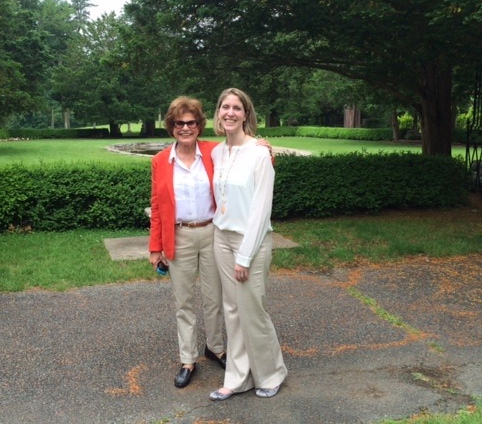
Margery Masinter and Sue Shutte, photographed at Ringwood Manor, June 2014
